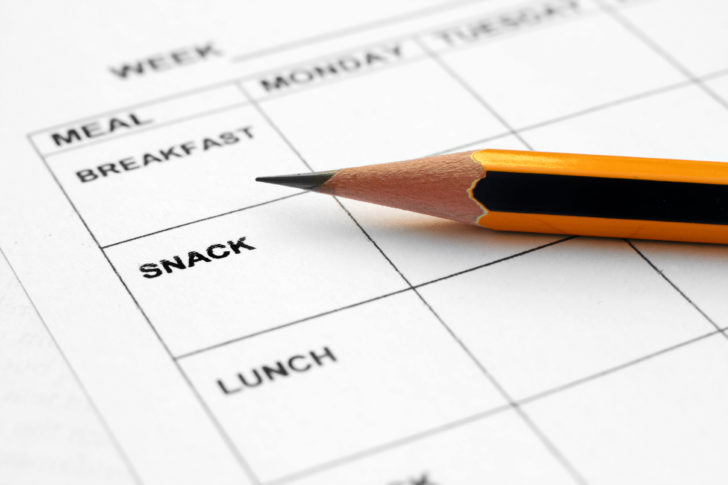4. Look at your calendar
I can’t tell you how many times I’ve shopped for dinner recipe ingredients that did not match the time I had to make dinner! Arriving home from a full day realizing you’d planned on chicken enchiladas but don’t have time for even the chicken part of that, is not fun (enter plan B you had in the freezer for such times). Anticipate which nights you’ll have the time to spend on a more involved meal and which nights the meeting or the soccer practice require a morning reminder to throw frozen chicken, black beans, and salsa in the crockpot (rip open the bag of tortillas when you get home and you’re ready).
Taking a minute to glance at your calendar before jumping into your week can also help you schedule leftover producing dinners. Try to plan these for early in the week for lunch leftovers throughout the week.

5. Avoid becoming a short-order cook
Ok parents, this is a big one. It’s OUR job to decide what is served for dinner and it’s our kids’ job to decide if and how much they’re going to eat what we serve. Considering their likes and dislikes is different than catering to them. Teaching them to politely sort what and how much they will eat at dinner will improve their eating competence, decrease pickiness, and lower your dinner time stress. Remember that in order for kids to be healthy they need to consume a variety of foods and nutrients over the course of the day and the week — so drop the pressure and power struggles, coaxing them to eat more of this or that. The pressure to eat what we think they should eat from their plate usually backfires. When they don’t sense a parental agenda, they’re freed up to be curious and creep up on a wider variety of foods.
A tip: Make a dinner bread and milk a staple at every dinner, allowing kids to eat to fullness on this if they’re still creeping up (and not yet eating much of) on the other parts of dinner.













